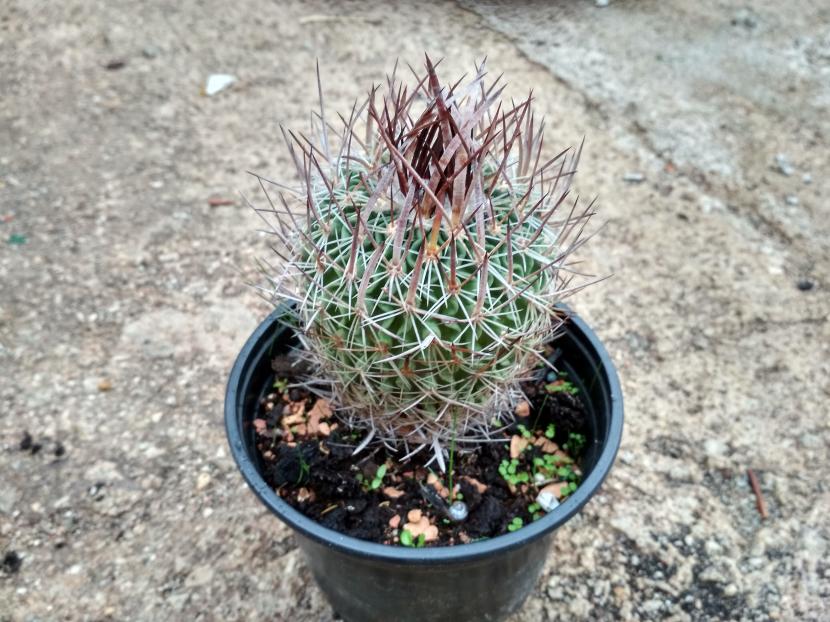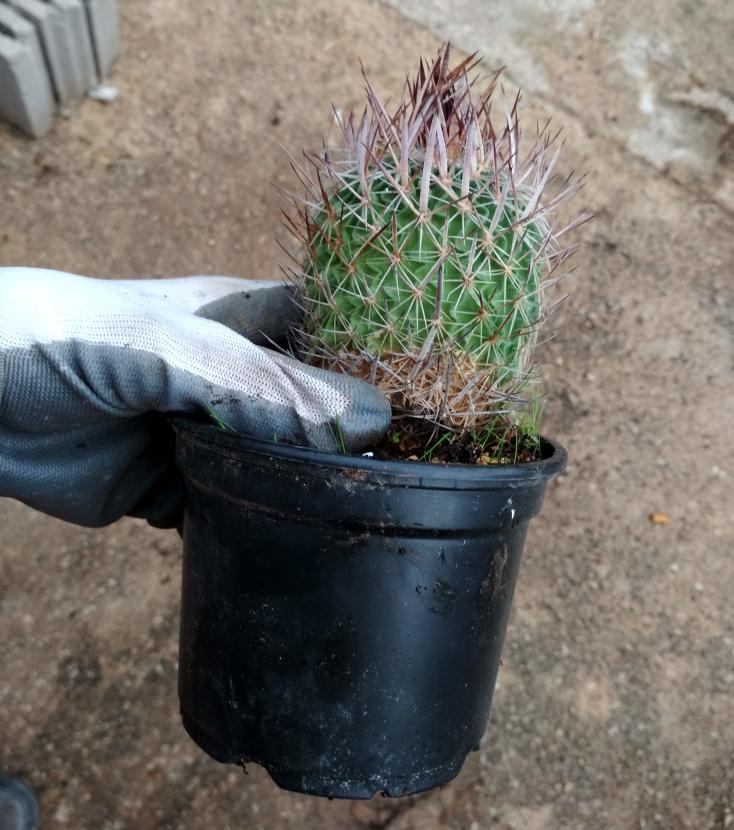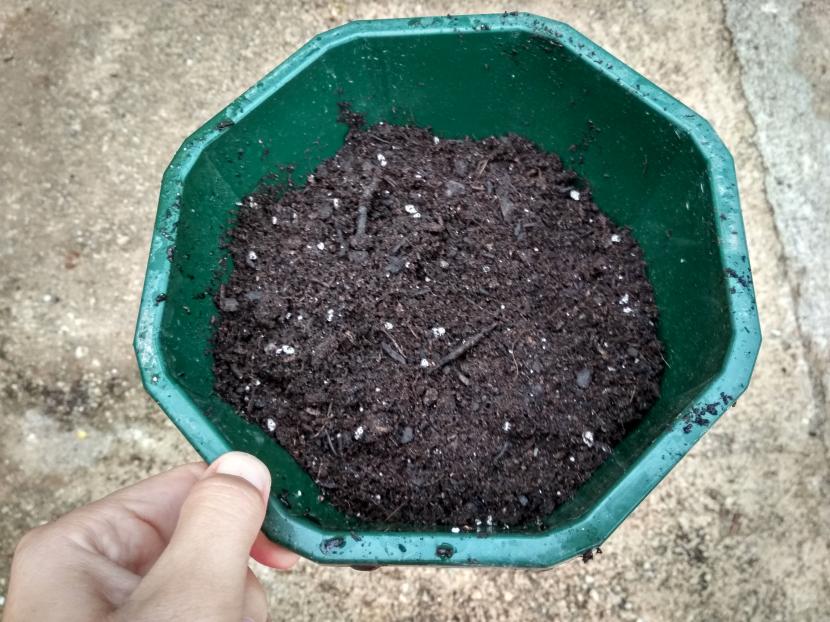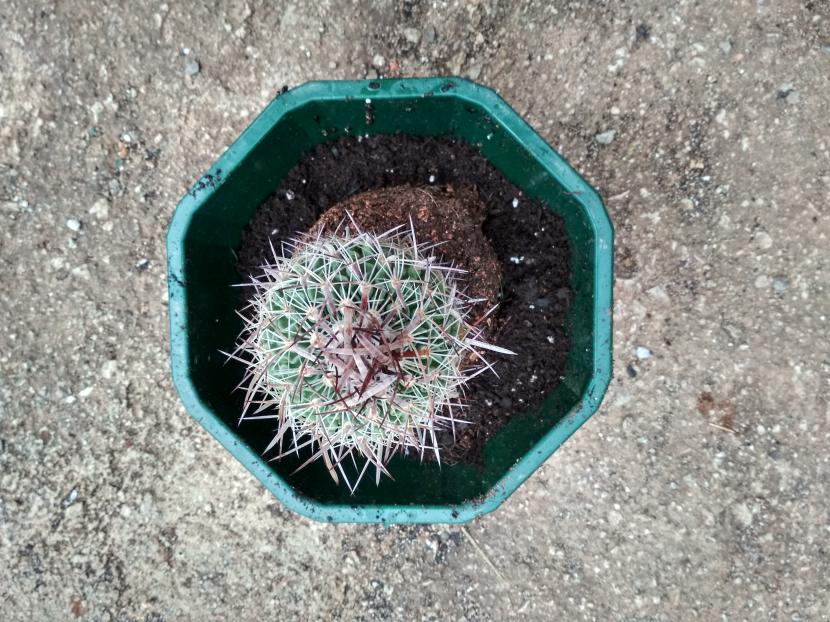
Echinofossulocactus multicostatus
It is very important to change our cacti pot so that they can continue their growth. The frequency will vary depending on the species, but generally all will need more space within two years of the last transplant. How to do this task correctly?
If you don't know how to transplant a small cactus, don't worry. You just need a little patience ... and follow these tips.
What do I need to transplant a small cactus?

To successfully change your pot to your plant, the most important thing you must do is prepare what you will need, which is:
- Flower pot: it is essential that it has holes for drainage and that it is between 2 and 3 centimeters wider than the previous one. It can be of two types:
- Plastic: it is very light and inexpensive, but over time it breaks. Still, it is the most advisable if you plan to have a cactus collection.
- Terracotta: it is somewhat more expensive, but it is very decorative and also allows the roots to take root well.
- Substratum composed of 50% coarse sand (pomx, perlite, akadama or washed river sand) and 50% black peat.
- Watering can with agua
- Gloves gardening
How to transplant it step by step?
Step 1 - Remove the cactus from the pot

How do you get a cactus full of thorns out of a pot without being damaged? First of all you must put your gloves on; so your fingers will be somewhat protected, which is already a lot 😉. After, take the pot in one hand, tilt it a little and tap the sides so that the root ball or earth bread is separated from it. If it has really long, sharp spines, put it flat on the ground; this way it will be much easier for you.
Then put one hand on the base of the cactus and one on the base of the pot. Now, pulls the plant up and the container down. If it doesn't come out easily, tap the edge of the pot and try again. If you have a lot of roots sticking out of the drainage holes, the best option is to take some sewing scissors and break the container.
Step 2 - Remove any herbs it may have

Once the cactus is out, it will be time to remove all the herbs that have sprouted, since you are removing the nutrients from the substrate. Make sure to uproot them to prevent its re-appearance.

This is how this Echinofossulocactus multicostatus 🙂.
Step 4 - Fill the pot with the cactus substrate that you have made

Now, you have to fill the new pot with substrate. As you see, for the Echinofossulocactus I have opted for a wide and low height. Why? Because this plant tends to thicken, and not so much to grow in height. If you need to transplant cacti like this, with a globular shape, this type of pots are the most advisable; On the other hand, if they are columnar, I recommend opting for pots that are more or less as tall as they are wide, or slightly taller.
In any case, you must fill it leaving space for the root ball. If it is a very small cactus that is in a 5,5cm or 6,5cm diameter pot, you can fill it all in and then make a hole in the center with two fingers.

Place the cactus well in the center (I know, in the photo it looks off-center, but I promise I centered it well 😉). Make sure that the base of the cactus is level with the edge of the pot or slightly below. If necessary, take it out and remove or add more substrate.
Step 5 - Finish filling and don't water for a week.

Having achieved that the cactus is well centered in its new pot, finish filling it with more substrate. To make it more beautiful, you can put small decorative stones on its surface, or even medium or coarse-grained sand.
What is the last thing to do? To water? No. If it were any other type of plant, yes you should water it, but as it is a cactus it is better to wait a week before resuming watering. You need that time to get used to your "new home." You could water it after transplanting and surely nothing would happen, but there is a risk that it will weaken or even rot, so you must have a little patience.
Meanwhile, you can continue to enjoy and show off your plant 😉.
How do I know if my cactus needs a transplant?

Mammillaria marksiana
Transplantation, a task that must be carried out in spring and that you can also do in autumn if you live in one without frosts or they are very weak and punctual, is very necessary for the cacti that we have in pots. With the passage of time, its roots come to occupy all the available space, also running out of nutrients. For this reason, they must be transplanted from time to time, especially if:
- You have never transplanted it, or it has been more than two years since you last transplanted it.
- Roots grow out of the drainage holes in the pot.
- You have not noticed any growth in the last year.
- If it is a globular cactus, it has almost literally started to come out of the pot, adopting an almost columnar shape.
In any of these situations, transplantation is urgently needed, so do not hesitate to follow the steps above so that your cactus regains its vitality.
Do you have any doubt? Go ahead and leave it in the Comments. I will reply to you soon.
Hi there! Thanks for sharing 🙂 I have a cactus that I have never transplanted, for a year or so I have it, and it has stopped growing, so I understand that it needs a transplant. But we are in February… will it hold if I don't transplant it now until spring? : C Thanks
Hi Nat.
If the temperatures in your area begin to exceed a minimum of 15 degrees, you can transplant it now without problem; if not, it is better to wait a bit.
Regards!
Jola, my small cactus was in a glass, it has no drainage. I just transplanted it into a pot with drainage, but the substrate was used for gardening soil and compost. It is not the right one, but I do not have the substrate you mention.
Hello Magallir.
It is no problem. But water only when you see that the soil is dry, so it will grow well.
Greetings.
Hello. I have a small cactus since October of last year. nothing has grown and I threw
little water (twice a week) and I was good in the shade. Today I accidentally dropped the pot and had to transplant it to a bigger one. I didn't know, they told me I needed a lot of water to do it. I see that it is a mistake. I put it in the sun so it doesn't rot. it will be OK?
Hello Amaretto.
If it had not sunbathed before, it is most likely to burn.
You have to get used to it little by little, putting it in the sun for an hour, and increasing the exposure time week after week.
Regards!